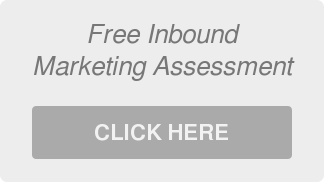 We hear it from our prospects all the time: “I need more traffic to my website.” We ask the same question every time: “What will you do with all of that traffic?”
We hear it from our prospects all the time: “I need more traffic to my website.” We ask the same question every time: “What will you do with all of that traffic?”
Think about all of the time and money you invest in developing content, sharing content on social media, optimizing web pages and running pay-per-click advertising campaigns. If you’ve got nothing in place to capture and convert your website visitors into leads, your efforts to drive traffic are wasted.
Your online marketing strategy should include more than driving traffic. It should also include ways to convert visitors into leads, nurture leads that are early in the buying process, and close leads that are sales-ready.
Three ways to convert website traffic into leads include; creating offers for your visitors, using calls-to-action to entice your visitors to take advantage of offers, and capturing leads with landing pages.
Creating Offers
Offers come in several forms. Most commonly they are downloadable content such as ebooks or guides. These are educational documents that interest your prospects by helping them solve a problem. Downloadable content offers should be created with your buyer personas in mind.
“A buyer persona is a semi-fictional representation of your ideal customer based on market research and real data about your existing customers.” – HubSpot
Your offer can also promote a service, such as our free competitive analysis or free SEO report card. Or, it can be a complimentary consultation in your core service area. These types of offers provide a lot of value to your prospects and get you in direct communication with them early in the sales cycle.
Some other offer examples are:
Free trials of software or services
Discounts on products or services
Research and white papers
Using Calls to Action
Calls to action (CTAs) are the things that trigger your visitors to take advantage of your offers. CTAs can be as simple as a link on your website, but work best when they are graphic elements, such as buttons or icons, that draw a visitor’s attention.
CTAs are placed on content-relevant pages throughout your site. For example, if you are an accountant who writes a blog on “The Top 10 Tax Deductions You Don’t Know,” you can place a CTA on that blog article for a Free Consultation. You successfully attracted a visitor who is interested in tax advice, but including a CTA on the page makes it easy for them to become a lead.
Capturing Leads with Landing Pages
A landing page is a web page that allows you to capture a website visitor’s information through a lead capture form. Landing pages maximize your efforts to drive traffic to your website by capturing valuable lead information.
Your objective should be to increase your website’s visitor-to-lead conversion rate and an optimized landing page can do that.
How do you optimize a landing page?
Have a clear description of the offer. Make sure there’s no question about what the visitor is getting.
Make the form the focal point by removing distractions such as site navigation, and use contrasting colors to highlight the form.
Capture the information you need to qualify the lead, but don’t deter your visitor by asking for too much information.
The Takeaway
Organizations need a complete inbound marketing strategy to attract visitors, convert leads and close sales. Only focusing on the amount of traffic you receive will not increase revenue. Implementing these three inbound marketing tactics will help you take full advantage of your efforts to drive traffic by turning those valuable visitors into qualified leads.





